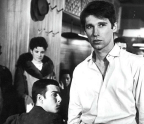The Home and the World

“Working in Bengal, we are obliged morally and artistically to make films that have their roots in the soil of our province.”
—Satyajit Ray, 1958
“A whole history remains to be written of spaces—which would at the same time be a history of powers…”
—Michel Foucault, 1980
In a recent article published in advance of the restoration and rerelease of his work, filmmaker and writer Ruchir Joshi detailed the context for creative Indian documentary in the late ’80s, just as he was developing his practice:
Independent documentary makers tended to attempt only two or three kinds of non-fiction films: Films commissioned by NGOs, “activist” films around a social or political issue about which the filmmaker felt passionately, and films to do with culture, usually traditional craft or performance.
Both emerging out of and working against these de facto standards, since the mid-’80s Joshi has produced a number of documentaries, essay films, and experimental shorts that are decidedly not beholden to the more conservative conceptions of nonfiction filmmaking practiced by his contemporaries. Most often taking the form of city portraits, Joshi’s films reveal the influence of such major figures in Bengali arts and culture as Rabindranath Tagore, Ritwik Ghatak, and Satyajit Ray—as well as that of Joshi’s father, the famed novelist, playwright, and artist Shivkumar Joshi, to whom the filmmaker paid tribute in his 2006 essay “Tracing Puppa”—even as they employ a variety of reflexive and experimental approaches that set them distinctly apart from that tradition, reflecting an awareness of how mediated images of India (both at home and abroad) often belie the country’s reality.
Berlin’s Arsenal film archives has (, 1991), (1991), and (1993)—all of which the director made in close collaboration with cinematographer Ranjan Palit, whose own documentary chops had been honed by his work on Anand Patwardhan’s landmark (1985). Though not positioned as such, the films form something of a loose conceptual trilogy, each centring on and responding to a particular form of artistic expression: music, language, and cinema, respectively. (If one cared to classify peddling and sport as art forms in their own right, that trilogy could be expanded to a pentalogy with the films that Joshi made before and after the abovementioned trio: [1985], about Kolkata’s New Market; and [1994], a cricket documentary Joshi made for the BBC.)
You’re reading a preview, subscribe to read more.
Start your free 30 days





